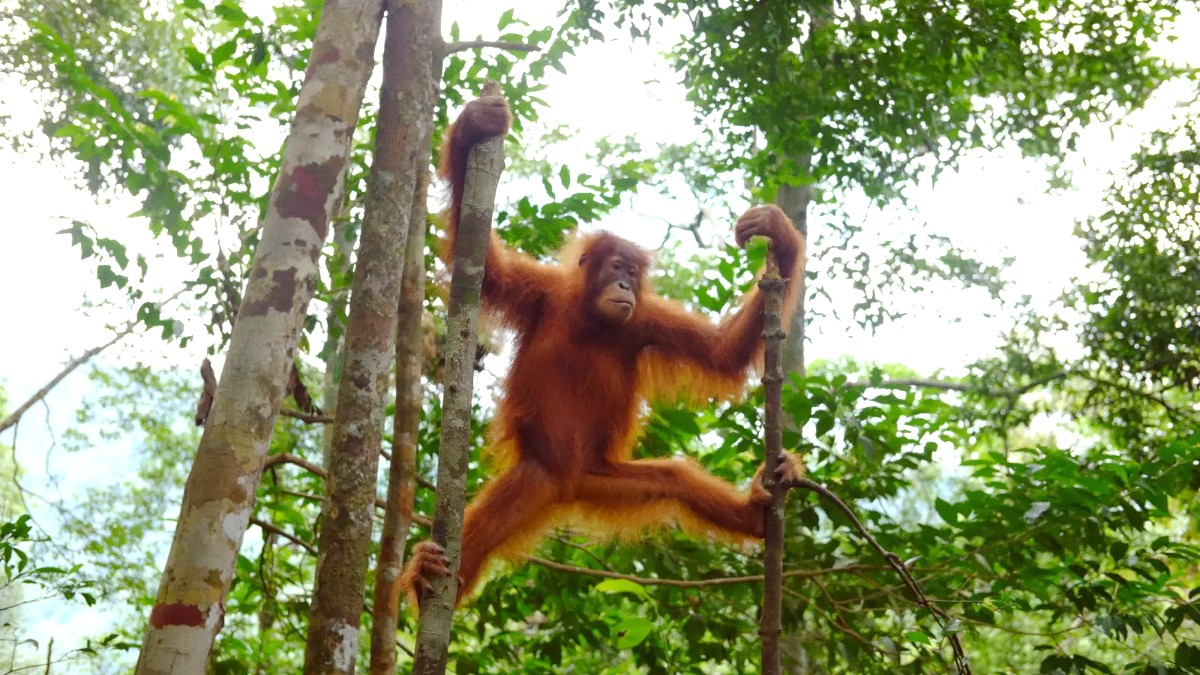
Sumatra, Indonesia
The Dry Season (High Season) is from June to September. Rainfall is less frequent, trails are less muddy, and trekking is easier. There is a greater likelihood of clear skies for photography and overall enjoyment. This period is generally considered ideal for jungle treks and orangutan sightings. However, expect higher tourist numbers, potentially leading to fully booked and more expensive accommodations. Guided tours might feel more crowded.
The Shoulder Season is April-May and October-November. Fewer tourists than in the peak dry season create a more relaxed atmosphere. Prices for accommodation and tours are often lower. Weather is often pleasant, with a mix of sun and occasional showers. The chance of rain showers increases as you approach the end of the dry season or the beginning of the wet season. Trails can become slippery if a heavy downpour occurs.
No hurricanes affect this region. The monsoon season refers to the wet season (December-March), characterized by intense, often daily, tropical downpours. Extreme temperatures are rare; the climate is consistently hot and humid, requiring hydration.
Jungle Trekking & Orangutan Spotting: The dry season (June-September) is ideal. River Tubing: Best during the dry season or early shoulder season when river levels are stable. Wildlife Photography: The dry season offers more predictable light, while the wet season presents unique atmospheric conditions and often active wildlife.
Fewer Tourists, Daily Rain
Lower prices, active wildlife.
Muddy trails, flood risk.
Fewer Crowds, Mixed Weather
Relaxed atmosphere, pleasant weather.
Increased chance of showers, slippery trails.
High Season, Ideal Trekking
Less rain, easier trekking, clear skies.
Higher tourist numbers, more expensive.
The dry season (June-September) is ideal due to drier trails and generally better visibility. However, orangutans are visible year-round. Reputable guides adapt treks to weather conditions.
River Tubing: Best during the dry season or early shoulder season when river levels are stable. High water levels in the wet season render tubing less safe. Wildlife Photography: The dry season offers more predictable light. However, the wet season presents unique atmospheric conditions and often active wildlife, offering different photographic opportunities.
Expect daily heavy rainfall during the wet season, often in intense tropical downpours.
Trails can become extremely muddy and slippery in the wet season, making trekking more challenging.
Increased risk of flash floods in rivers during the wet season means some activities like tubing may be less safe or unavailable.
Extreme temperatures are rare; the climate is consistently hot and humid, hydration is important.
The monsoon season refers to the wet season (December-March).
Meeting all necessary conditions facilitates smooth entry into Indonesia.
Citizens of over 90 countries can enter Indonesia visa-free for tourism (30 days, non-extendable). Citizens of over 90 other countries can obtain a Visa on Arrival (VoA) for tourism, valid for 30 days and extendable once for another 30 days.
Your passport must be valid for at least 6 months beyond your intended departure date from Indonesia. This rule sees strict enforcement. Proof of an onward or return ticket is generally necessary.
Costs below exclude international flights and long treks.
Prioritizing your health and safety makes a visit to Bukit Lawang more secure.
4-6 weeks before travel for personalized recommendations.
Measles, Mumps, Rubella, Diphtheria, Tetanus, Pertussis, Polio, Flu.
Recommended due to potential for food/waterborne transmission.
Dengue Fever Prevention
Dengue Fever is present year-round. No vaccine is available. Prevention strategies are important: Use Insect repellent with DEET (30-50%) and wear long sleeves/pants, especially during dawn and dusk.
Traveler's Diarrhea is common. Drink only bottled or purified water. Eat hot, cooked food. Avoid raw vegetables and unpeeled fruits from questionable sources. Pack Anti-diarrheal medication like Loperamide.
Sunburn & Heatstroke: Stay hydrated. Use High SPF sunscreen (30+). Wear a hat.
Bukit Lawang has basic clinics. For serious issues, travel to Binjai (2 hrs) or Medan (4 hrs) for international-standard hospitals.
Limited directly in Bukit Lawang. Contact your tour guide, guesthouse owner, or local police first for assistance.
Police: 110, Ambulance: 118 or 119, Fire Department: 113.
Bukit Lawang is generally safe for tourists. Violent crime is rare. Petty theft can occur.
Travel insurance is highly recommended. Policy coverage should include medical emergencies, adventure activities, trip cancellation, interruption, and lost baggage.
Carry copies of your passport, visa, and insurance policy details separately from originals.
Keep a list of emergency contacts (family, insurance, embassy) readily accessible.
Inform your guesthouse/guide of your itinerary. Phone charged, local SIM advised.